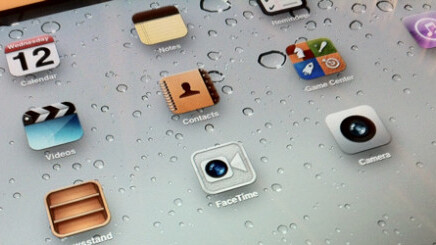
The latest version of Apple’s iOS software, 5.1, has hit roughly 61% adoption among users of some popular iOS apps. Developer David Smith has shared some of the statistics he has gathered from his app Audiobooks Premium regarding adoption of Apple’s latest OS.
Smith saw 61% of users already upgraded to the latest version of iOS after only 15 days of release (the data is from March 10th). We corroborated this evidence with developers of other popular iOS apps, who said that Smith’s figures look close to what they’re seeing.
We reported earlier in March that iOS 5.x had hit 75% adoption, while Android 4.0 Ice Cream Sandwich was stuck near 1%. Now, the latest version of Apple’s iOS software is already running on a majority of Apple’s devices, while ICS still languishes at 1.6%.
The difference in adoption really becomes stark when you look at just the versions of the software that are ‘over the air’ upgrade compatible. Apple has already had a great deal of success getting customers to upgrade quickly, but moving the updates to a wireless method that allows for updates to be just a couple of taps away has improved that even further.
The irony is palpable here, as over the air updates are a feature that has been a part of the Android OS almost since the beginning. It also sucks because Ice Cream Sandwich is actually really, really good compared to older versions of Android, and its terrible that so few users have access to it.
As Smith points out, this speaks primarily to the fragmented nature of Android upgrades, not the fact that users don’t want to upgrade to the latest versions. “…the amazing upgrade pace we see above is a result of users being given the opportunity to upgrade and then acting on it,” says Smith. “Most users of Android simply don’t have that opportunity.”
The fact is that Android users likely want to have the latest and greatest features of the OS as much as users of Apple devices do, but they’re simply not presented with the opportunity as easily. Apple’s concentrated platform presents only a handful of hardware that is all controlled explicitly by the company. Android offers a huge amount of flexibility that allows it to be distributed on all kinds of different hardware configurations, but part of the price that is paid is that upgrades don’t happen as fast.
What is frustrating, though, is that many times the lack of upgrades is related to the reluctance of carriers to shoulder the costs of pushing out software updates to older phones and Google’s inability to enforce distribution of timely updates to its latest software. Its even worse when updates are delayed or mangled because manufacturers insist on pasting their own crappy UI on top of the standard Android experience.
Regardless of the causes, though, the effect is the same. Google developers have to make sure that their apps work on the lowest common denominator of hardware and software, often unable to add new features for fear that they will limit the market for their apps, or offering several versions of the app for various kinds of hardware.
iOS developers, meanwhile, have a clearer path to the latest software and hardware and can feel free to utilize the latest features with impunity. As Smith says, it can never be an ‘apples-to-apples comparison, but “it does reinforce my near complete focus on developing for Apple’s platforms.”
Get the TNW newsletter
Get the most important tech news in your inbox each week.





